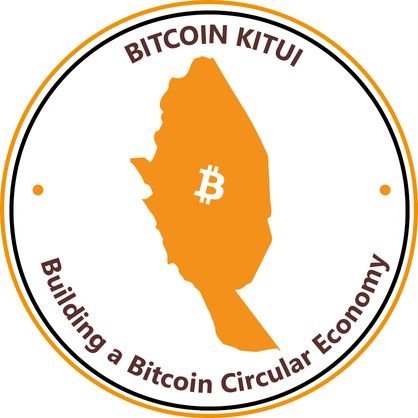
Validating Lightning Signer
@VLSProject
Non-custodial Lightning security for serious balances. Off-node keys + full validation = a compromised node can’t steal funds Open source Rust SDK. http://vls.tech
You might like
When something goes wrong, you want logs that tell a clear story. VLS gives you a trail of what was asked, what was checked, and why a signature was allowed or refused.
Inside VLS, every request gets interrogated: Are we signing a revoked commitment? A re the outputs and amounts what we expect? Are HTLCs being added or settled in a way that can leak value? If the answers are not right, no signature. Not in our house.
Think about attack surface. Monolithic node: everything that runs on that box is in scope for “all funds lost." VLS: the signer is a small Rust codebase, narrow API, no gossip, no plugins, no user traffic. You harden a tiny component, and treat the node as untrusted.
VLS in practice: • Keeps keys on a dedicated signer, not on the Lightning node • Replays the relevant Lightning state for each request • Refuses to sign revoked states, bad closes, or sketchy HTLC flows So compromising the node alone is not sufficient to move funds.
A Lightning node is basically a hot wallet with a lot of network surface area. Keys, channel state, plugins, RPC, OS, all on one box. If that box is owned, so are your channels. VLS moves keys and Lightning validation to a separate signer so a hacked node is not the end of…
Lightning setups: one node that routes, talks to Bitcoin, and holds all the keys. Fine for small balances. Once the amounts are real, the only question that matters is: “What happens if this node is compromised?” VLS exists so the answer is not “we lose everything.”
“Only the user can spend” is a benefit customers understand in one read. You do not need to explain the entire protocol to make the value land.
Blind signing trusts the node. Validating signing checks the request. Same UX, very different outcomes.
If your answer to “Could your servers drain me” is anything but “No,” you do not have self-custody.
Hosted node without custody risk is not a dream. It is a pattern that exists today.
Users expect Bitcoin-level control on Lightning. Keep keys off the node and verify every request.
LSPs grow balances when users believe they alone control spending. A validating signer makes that belief true.
Two simple questions for any wallet or LSP: 1. If your node is compromised, can funds move? 2. What exactly does the signer check?
Keys without validation are not control. They are permission slips.
Bottom line: Lightning does not require choosing between usability and control. Keep the fast UX. Add validation. Make “only the user can spend” true in the real world, not just in a tagline.
Non-custodial means only the user can move funds. If a hacked server can spend, it is not non-custodial.
Hosted node plus validating signer gives you convenience and control in the same design.
Blind signing is marketed as “you hold the keys.” True on ownership. False on spending authority.
The easiest way to understand VLS: it refuses to sign when the request is unsafe, even if the node asks nicely.
Real self-custody on Lightning is possible. Keep keys off the node. Validate every request. Only the user can spend.
United States Trends
- 1. #SurvivorSeries 156K posts
- 2. Auburn 25.8K posts
- 3. Austin Theory 2,871 posts
- 4. Bama 22.2K posts
- 5. Seth 19.8K posts
- 6. Ty Simpson 2,432 posts
- 7. Roman 45.9K posts
- 8. Liv Morgan 30.3K posts
- 9. Duke 21.6K posts
- 10. Vandy 17.7K posts
- 11. #IronBowl 1,331 posts
- 12. Nikki 36.4K posts
- 13. John Cena 33.5K posts
- 14. Preston Howard N/A
- 15. Jovic 1,461 posts
- 16. Bron Breakker 3,704 posts
- 17. Punk 33.3K posts
- 18. Ryan Williams 1,137 posts
- 19. Lane Kiffin 37K posts
- 20. Grubb 1,340 posts
You might like
-
 Core Lightning ⚡️
Core Lightning ⚡️
@Core_LN -
 Elle Mouton
Elle Mouton
@ElleMouton -
 Bitcoin Dev Kit
Bitcoin Dev Kit
@bitcoindevkit -
 Bitcoin Design Community
Bitcoin Design Community
@bitcoin_design -
 Roy
Roy
@roy_breez -
 t-bast
t-bast
@realtbast -
 Voltage ⚡
Voltage ⚡
@voltage_cloud -
 AMBOSS ⚡
AMBOSS ⚡
@ambosstech -
 MyCitadel
MyCitadel
@mycitadel_io -
 BOLT🔩FUN | Something FUN is coming
BOLT🔩FUN | Something FUN is coming
@boltfun_btc -
 elsirion 🔅
elsirion 🔅
@EricSirion -
 Graham Krizek
Graham Krizek
@gkrizek -
 OpenSecret
OpenSecret
@OpenSecretCloud -
 Antoine Poinsot
Antoine Poinsot
@darosior -
 Daniela ⚡
Daniela ⚡
@danielabrozzoni
Something went wrong.
Something went wrong.






























































































































